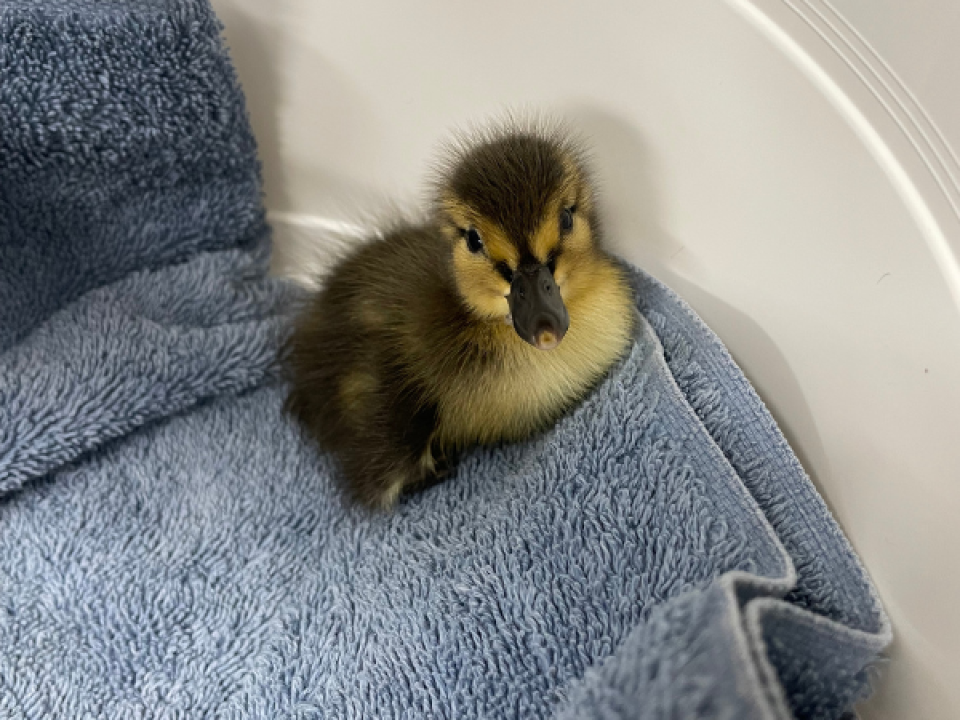With the warmer weather of spring comes baby season, which brings challenges for wildlife. In spring, more than 100 wildlife babies are admitted to the Wildlife Rescue hospital every week because they have been orphaned or injured.
Young wildlife can become orphaned for a variety of reasons, and falling out of their nest is one of them. Last year alone, 385 of the babies brought to Wildlife Rescue had made a similar fall. Sometimes these birds can use a helping hand; however, for older birds this behaviour can be important for their development, and human intervention can do more harm than good.
If you come across a newly hatched bird that has fallen out of their nest and has visible signs of injury, the bird needs to be brought to Wildlife Rescue. Here, they will receive the best care they can get for their best chance at survival. If the animal does not have any visible injuries, the next step is to find out what the baby looks like.
Baby birds go through three developmental stages as they grow into adults. As hatchlings, they will often keep their eyes closed, and have few or no feathers. When they’re in this stage of development, these baby birds can be carefully returned to their nest. After doing so, please watch closely from a distance for their parents to return. Birds at this stage still require care from their parents.
If there is no nest in sight, you can create a make-shift nest. To do this, you can utilize a wicker basket, and add dried grass to the base and sides. Secure the makeshift nest on the same tree, as close as possible to the original nest, ensuring that it is under cover so that the baby is shielded from the elements. After securing the nest, monitor to ensure their parents return and are looking after the young bird in their new nest.
In the next developmental stage, as nestlings, birds will have already opened their eyes and developed some feathers but will not yet be standing or hopping around. During this phase, birds should still be in their nest, and it is safe to treat the situation similarly to when they are hatchlings.
During the last stage, as fledglings, birds will likely be almost fully feathered and have started to hop or flutter awkwardly. In this third stage, the bird may also have some fleshy edges at the base of their beaks or corners of their mouth and their tail and wings may be shorter than those of an adult. If the bird is not in immediate danger, there is no need to intervene. Birds at this stage may look a little clumsy, much like a human toddler taking their first steps. During this phase, they need the time and space to learn how to fly and the parents will still be watching them from close by.
In some cases, wild babies may become orphaned because their mother has been scared away by a cat. You can help by keeping her youngsters protected while they await her return. She might come back once the threat has passed. However, if the mom has not returned after a couple of hours, please contact the Wildlife Helpline at 604-562-7275 or [email protected] for more guidance.
If you notice a Mallard family is trying to cross the road and you are concerned for their safety, always consider human safety first — never put yourself or other people in danger. Trying to capture the family and move them to a safe spot will only risk scaring off the mother and orphaning the babies. Please keep a few feet away from the family to reduce stress for the mother and lower the chance of her abandoning her family. You can help the family cross the road safely by walking alongside them, waving at drivers or flashing your lights to alert them of the ducks. Always keep a safe distance and try to gently steer the birds in the direction of the closest body of water.
Each case is unique to both the situation and the species. If you are ever unsure of how to approach a situation with young wildlife in distress, please contact the Wildlife Helpline at 604-526-7275 or [email protected] for help and guidance. Wildlife Rescue is open 365 days a year.
This article was written by Elin Molenaar, the communications assistant at Wildlife Rescue Association.

